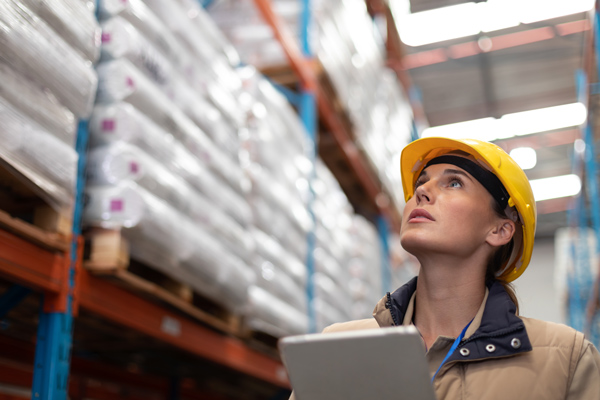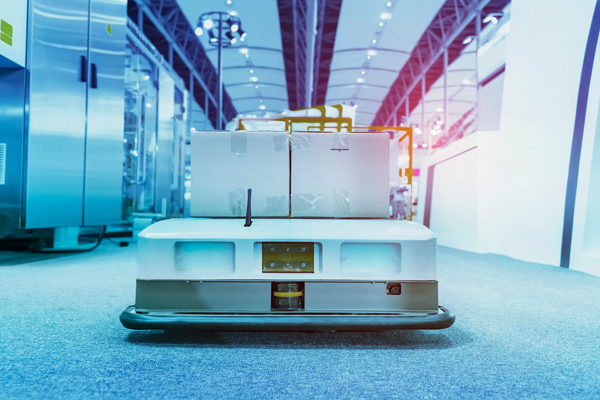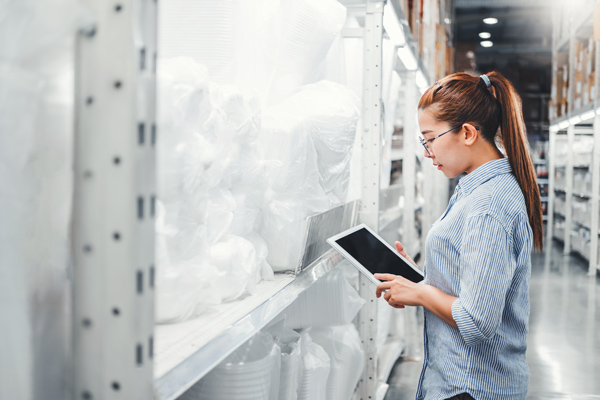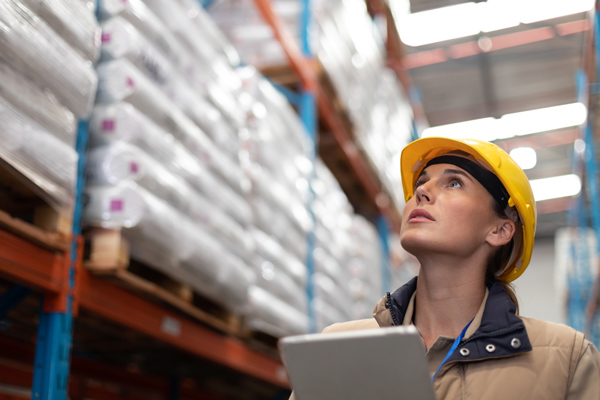Overview
- The Greater Boston Food Bank (GBFB) has partnered with MIT and Ava Robotics to bring a new sanitizing robot into their distribution centers to fight COVID-19 spread.
- Industry 4.0 and automation technologies seamlessly integrate with ERP mobile barcoding to meet pandemic era challenges.
- With COVID-19 cases increasing, companies who prioritize safe innovation technologies will be better positioned to safeguard operations and meet increased demand.

The realities of the recent pandemic have meant warehousing and distribution centers must optimize their operations to avoid shutdowns. Operations have had to make numerous adjustments to workflows to meet advanced hygiene and sanitation measures and support social distancing for workers. This includes increased time for cleaning between shifts, remote work and reduced staff numbers.
The Greater Boston Food Bank (GBFB) has taken these measures a step further. In collaboration with MIT and Ava Robotics, they’ve deployed an innovative new robotic system to remotely clean their 4,000 square foot warehouse each night in just 30 minutes.
If you use an ERP system, you can integrate these bots into your standard workflows using mobile barcoding and data collection.
Integrating Robots with Mobile Barcoding Technology
GBFB’s partnership with MIT and Ava Robotics is just one example of how companies can use automation technology to solve these modern warehouse challenges. Like others in the food and beverage industry, GBFB has experienced increased demand during the pandemic and needed advanced cleaning measures to safely meet this demand.
Their new robot uses UV-C light to autonomously disinfect surfaces and airborne virus. Operating at a speed of .22 miles per hour, it can clean its 4,000 square foot warehouse in just 30 minutes. The UV-C dosage emitted neutralizes approximately 90% of the viruses it encounters on its route.
Its success at GBFB has positive implications for its applications across other industries and environments as well, especially as COVID-19 cases continue to rise.
Using Mobile to Control Automation Technology

Operations must also consider how to oversee this lifesaving technology. Will it require more manual oversight, or can it be integrated into other technology stacks to help streamline the communication process?
Robots, helper bots, co-bots and autonomous vehicles, as well as other business systems, can be integrated with your enterprise systems to achieve advanced warehousing. This equips companies with even greater inventory oversight and other advanced functionalities.
Mobile barcoding is the technology that helps these robots and your ERP communicate with each other. Traditional barcoding lets your workers collect data at their point-of-work by scanning barcodes attached to inventory or other material. Mobile barcoding, however, amplifies this process by empowering workers to transact against the ERP in real time and connects other business systems to make them more efficient.
Proven Case: Laser Guided Vehicles Enhance Performance, Increase Efficiency
A food product company, for example, decided to use Laser Guided Vehicles (LGVs) to minimize the time their workers spent walking back and forth to pick inventory for production. Then, they integrated RFgen Mobile Foundations for Oracle’s JD Edwards to direct the LGVs and transact their actions against the ERP.
This advanced communication between all its systems resulted in significant time savings while facilitating social distancing measures and increasing worker productivity by 20%.
See Also: How IoT/IIoT-Worker Relationships Unlock Supply Chain Innovation »
For operations facing COVID-19 challenges, mobile barcoding also means less work needs to be performed manually, so fewer workers can accomplish as much, or more, as operations with larger workforces. It also means that workers are better able to adhere to social distancing measures, reducing potential virus spread.
And, as seen with the GBFB, it can open the door to even more modern, and innovative, applications.
Enhanced Warehouse Sanitation Measures are Here to Stay

COVID-19 cases are increasing globally. For those in the supply chain industry, like GBFB, this means enhanced warehouse sanitation and social distancing measures are here to stay for the long term.
Many of our customers made immediate modifications to their workflows to keep production up and running. This includes:
- Installing hand sanitizer and hand washing stations
- Practicing social distancing between workers
- Holding video meetings
- Encouraging remote work
- Restricting visitors
- Eliminating paper transfers and shared workspaces through mobile barcoding
Read More: Measures to Keep Our Essential Supply Chain Workforce Safe »
One of the main challenges has become how to balance time for effective sanitation with allowing time to meet the increased demand so many essential industries are experiencing. This is what GBFB’s new UV-C emitting robot is hoping to solve.
Prioritizing Automation to Meet Pandemic Era Challenges
Warehouse innovation initiatives are often placed on hold to maintain daily operations. However, the unique challenges of this pandemic era make maintaining that status quo even more difficult.
Companies like GBFB are able to better meet the increased demands for their goods because of their willingness to prioritize this automation technology. With COVID-19 cases rising, they are also better positioned to help others at an accelerated rate into the future.
Other companies who take similar steps, like incorporating mobile barcoding with Industry 4.0 automation technology, can similarly safeguard and enhance operations.






